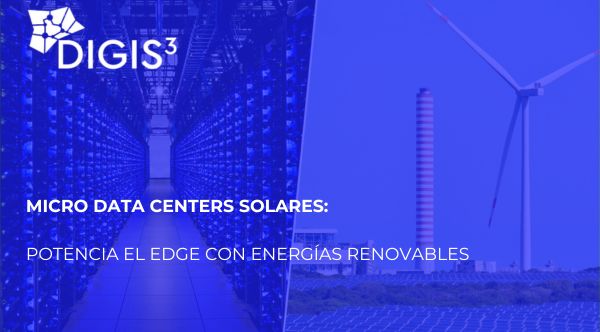The rise of edge computing demands local, resilient, and efficient infrastructure. Micro Data Centers (MDCs)—turnkey racks or containers that integrate computing, storage, cooling, and security—can now operate 100% on solar energy thanks to falling panel prices and new LiFePO₄ batteries..

Why Solar + Edge?
Combining solar energy with edge computing addresses the growing need for sustainable and autonomous local infrastructure. As energy consumption at the network edge increases, solar-powered micro data centers offer an efficient solution that reduces emissions, enhances resilience during outages, and enables operations in remote areas without relying on the traditional grid. Key reasons include:
- Rising demand: Edge energy consumption will grow from 1 GW in 2019 to 40 GW by 2028.
- Footprint reduction: Solar MDCs cut emissions by up to 50% compared to mixed-grid setups.
- Independence and resilience: Solar microgrids with batteries sustain critical operations during outages—essential for industrial and agri-food IoT.
Key components of a solar MDC
A solar micro data center consists of several modules working together to ensure performance, autonomy, and energy efficiency. From prefabricated racks to advanced battery systems, each component plays a specific role in enabling continuous and optimized data center operation, even in demanding environments.
Module | Function | Highlighted Options |
|---|---|---|
Prefabricated racks | Integrate servers, UPS, and cooling | EcoStruxure Micro DC, Delta SmartCabinet |
Photovoltaic panels | Generate 4–20 kW on rooftop or ground | High-efficiency bifacial modules |
LiFePO₄ batteries | 24–48 h autonomy | Scalable 50–200 kWh systems |
MPPT / Inverters | Optimize and convert DC-DC / DC-AC | 48 V or 800 V HVDC for edge AI |
Remote management | Monitoring, AI for cooling | DCIM + AI software (Schneider IT Advisor) |
Tangible benefits
Solar MDCs are not only sustainable but also practical and cost-effective. They offer low latency for critical applications, fast deployment, stable operating costs thanks to self-consumption, and compliance with environmental and sustainability regulations such as the EU Green Taxonomy—making them a strategic choice for companies committed to decarbonization.
- Latency < 10 ms for edge AI and 4K video.
- Contained CapEx: Deployment in 6–12 weeks vs. 18 months for traditional data centers.
- Stable OPEX: Self-consumption + batteries = reduced exposure to volatile energy prices.
- ESG & EU Taxonomy compliance: On-site renewable energy supports decarbonization goals.
Real-World use cases
The versatility of solar MDCs is evident in their application across sectors such as rural telecommunications, smart agriculture, and port logistics. These cases show how technology can improve coverage, optimize resources, and ensure critical operations—even in areas without access to the conventional power grid.
Sector | Example | Impact |
|---|---|---|
Rural telecom | 5G towers with solar MDC + batteries | Uninterrupted coverage without diesel generators |
Smart agriculture | Drone image analysis on-site | Real-time irrigation decisions, -15% water use |
Ports & logistics | Floating solar data center (Yokohama, 2025) | Offshore resilience testing without grid access |
Challenges and how to overcome them
While solar MDCs offer clear advantages, they also face challenges such as solar intermittency, space limitations, and upfront costs. However, technical and financial solutions —like hybrid systems, optimized structures, and public subsidies— help overcome these barriers and enable large-scale adoption. Key strategies include:
- Solar intermittency: Hybrid sizing (PV + battery + biogas backup).
- Panel space: Bifacial modules + parking pergolas.
- Initial cost: Red.es “Única Edge” aid and 10% Corporate Tax deductions for self-consumption.
DIGIS3 support
- Technical-economic diagnosis.
- “Test before invest” lab.
- Funding search
- Training.
Request your free evaluation: info@digis3.eu